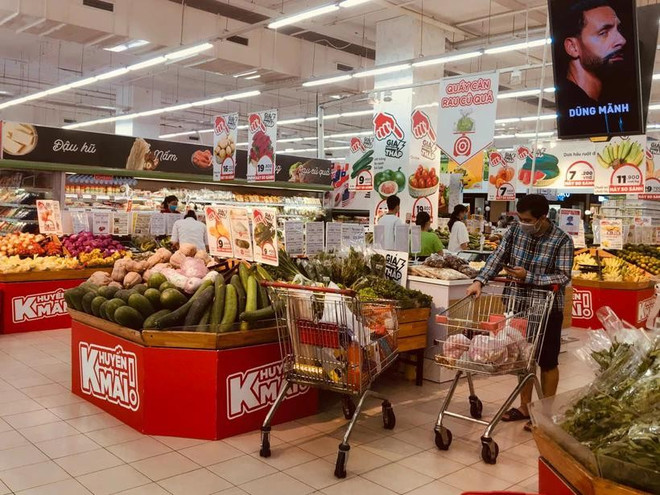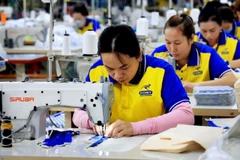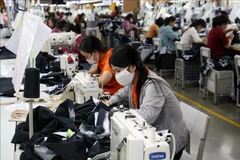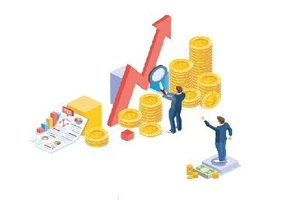
Hanoi (VNA) – Despite global economic turbulence and domestic difficulties, Vietnam successfully met its inflation target for 2024, keeping the average consumer price index (CPI) at 3.63% compared to the previous year.
This outcome aligns with the target set by the National Assembly and proves the Government’s effective and flexible governance over the macro-economy.
In a recent interview granted to Vietnam+, Nguyen Thu Oanh, Director of the Price Statistics Department at the General Statistics Office of Vietnam (GSO), discussed the achievements and preparations for 2025.
Creating solid stepping stone
- The year 2024 witnessed many complex developments. According to the GSO, how did external factors affect Vietnam’s inflation and what measures were taken to control inflation?
Ms. Nguyen Thu Oanh: In 2024, Vietnam faced numerous challenges, both internal and external. In the world, they included escalating armed conflicts, slow global economic recovery, unpredictable exchange and interest rate fluctuations, and extreme weather conditions. Globally, inflation remained a significant concern, with notable increases in key economies such as the United States (2.7%), the Eurozone (2.2%), and many Asian countries like India (5.5%) and Japan (2.9%).
In that context, Vietnam showed relatively good control over inflation. In December 2024, the CPI rose by 2.94% year-on-year, contributing to an overall 3.63% increase for the year, meeting the target set by the National Assembly.
This achievement came as a result of the Government directing ministries, sectors, and localities to take many coordinated measures. The flow of goods was kept smooth, lending interest rates lowered, the foreign exchange market stable. Besides, the Government also paid attention to boosting public investment disbursement, launching credit packages aimed to support businesses, reducing taxes and fees. Thanks to these efforts, prices of goods and services avoided abnormal fluctuations while inflation was kept in check, creating a stepping stone for economic growth.
- In 2024, the CPI fluctuated monthly and was impacted by different factors. Could you further elaborate on the main causes of CPI increase and decrease last year?
Ms. Nguyen Thu Oanh: CPI fluctuation in 2024 reflected the complexity of the factors influencing inflation. The sharpest spike was seen in February due to increased consumer demand ahead of the Lunar New Year (Tet) celebrations, and later fell in March because of lower demand.
From April to July, the CPI continued to rise, driven by higher rice, pork, fuel and electricity prices, as well as health insurance premiums. The CPI became stable in August but rose slightly between September and December due to increases in food, fuel, and housing rental prices.

Key drivers of the CPI hike in 2024 included price increases in food, particularly rice and foodstuff; housing, electricity, water, fuel and constructive materials, mainly household electricity and rental housing; pharmaceuticals and medical services; and education due to higher school fees.
On the other hand, prices in postal and telecommunications services decreased, mainly due to discounts on mobile phones.
Various factors impacted CPI changes in 2024.
- With the inflation control successes in 2024, what is the GSO’s forecast for inflationary pressure in 2025 and which factors may pose challenges?
Ms. Nguyen Thu Oanh: Looking ahead, despite the positive results obtained, we should not be subjective. There remain latent risks in the inflationary pressure in 2025.
Global uncertainties, such as escalating armed conflicts, trade tensions between major countries, and extreme weather events, could disrupt supply chains and fuel transportation costs, further driving up commodity prices. Additionally, stricter tax policies and protectionist trade measures may worsen trade tensions, contributing to inflationary pressure.
On the domestic front, import expenses for raw materials may climb up in line with global price and exchange rate fluctuations, boosting production costs. Furthermore, market-based adjustments to electricity prices, school tuition, and healthcare services are likely to impact the CPI.
In addition, demand stimulus packages, interest rate decreases, and public investment may also cause pressure on prices if they are also controlled well. The last but not least is that prices, especially food prices, tend to rise in year-end months and during major festivals. The situation may become more complicated in natural disaster and epidemic cases.
- What are important measures Vietnam should focus on to maintain inflation control in 2025 and ensure stable economic growth?
Ms. Nguyen Thu Oanh: To address these challenges, Vietnam should continue implementing comprehensive measures, with a focus on several main aspects.
First, a proactive and flexible monetary policy is essential to regulate credit growth. Second, it is necessary to closely monitor and manage prices in the market, especially those of essential goods.

Next, it is important to ensure a steady supply of goods, promote domestic production, and diversify supply sources to reduce dependence on imports. At the same time, effectively stepping up public investment disbursement and preventing wastefulness is another measure.
Additionally, it is needed to strengthen the forecasting capabilities to make timely response. The Government should also continue business support measures and communications about inflation. Once carried out comprehensively and efficiently, these measures will help curb inflation properly and maintain sustainable economic growth.
With the proactivity, determination, and close coordination of ministries, sectors, and localities, Vietnam will continue navigating challenges and keeping inflation under control, providing momentum for stable economic growth.
- Thank you very much!/.



























